If you’re in business, you know that you need some sort of security system. However, not all security systems are created equal, and not all will work well in your business’ particular context. For example, what if your current system excels at identifying risks, but lacks a way to report security violations that are in progress? It wouldn’t matter if that system cost an arm and a leg. If your company found itself facing that scenario, then your system might very well fail exactly when it needs to succeed.
Evaluating a security system isn’t a matter of simply applying static metrics. It requires an understanding of the business’ greater operational context, how a system can perform and is currently performing, any expected security risks, and the way in which all of these elements intersect. Read on to learn how you can evaluate your current security system or one you plan to install.

Check assets and points you want to protect
Before we dive into how to evaluate the strengths (and also weaknesses) of any security system, we need to consider an axiom that all experts believe about security: It is impossible to guard against all risk. Think of security costs like a rising exponential distribution with every increment of risk defrayed costing greater and greater sums. Those costs might include money, manpower, or combinations of both. Eventually though, one will reach a point where it simply becomes unfeasible to remove every possibility of a security breach.
That’s why your first step in evaluating the strength of any security system should be checking the assets and points you want to protect. List them in order of priority, because not every area represents an equal risk. Only then can you begin to assess just how strong your system is.
Check your costs of property loss
Understanding just how much a loss scenario will cost you is the flip side of the cost/benefit analysis coin. Let’s say that your business doesn’t needs to manage sensitive data, hold expensive inventory on site, or comply with stringent regulatory requirements. While no company particularly wants to deal with a break in or clean up vandalism, those who don’t need to safeguard valuable goods or trade secrets can weather security breaches fairly inexpensively.
The same doesn’t hold true for, say, high-end retailers, schools, multi-family residential complexes, or government facilities. A burglary or incursion from an unauthorized party can prove extremely expensive in these contexts. In addition to losing the value of pricey goods and any accompanying repair costs, you may also have to shoulder legal and regulatory repercussions.
Identify risk areas and points of failure
Did you know that places of egress and ingress represent the greatest security risks on your property? It’s true. Similarly, were you aware that if your business sits right next to the on-ramp of an interstate, burglary risks increase? (Most criminals prefer the proverbial speedy getaway that vehicular travel offers.) What kind of lighting do you have around your facility, and do local ordinances lead to natural blind spots around your property? (Some zoning restrictions preclude the use of lights that extend beyond your property, which may create areas that allow for unauthorized individuals to approach the premises.) Identifying risk areas such as these goes a long way toward knowing if your existing or future security system will defray potential criminal acts.
Check if the security system covers weak points
After you’ve identified those potential points of failure and weak spots that could lead to security breaches, it’s time to take a look at your current or prospective security system. For example, consider how your system’s sensor array interacts with the space around your facility and whether or not you have adequate coverage. However, plugging up obvious weak spots isn’t the only factor to consider, as we will see more in the next section. In the end, weak points are more than just coverage gaps. They also represent security equipment that can be easily disabled or circumvented.
Look for points of failure that aren’t covered
Speaking of security equipment, once your audit has considered all external factors, it’s time to look at the internal ones. An important consideration involves your system’s reporting or redundancy measures. For instance, would you know if someone attempted to tamper with the system? Are there any individual components that would compromise the system’s integrity if they failed? If you rely on non-automated systems (e.g., CCTV), do you have sufficient personnel coverage to facilitate reporting in the event of an incident? If you cannot answer definitively, you may need to consider changes to your system.
Other failure points may relate more specifically to the system itself. For instance, if you’re running a Wi-Fi-based system, ensure that hardware is placed in such a way that it won’t experience any signal blockages. And you may want to think about installing battery backups for isolated systems that rely on a single, vulnerable electricity source. Finally, wired systems deserve special consideration. While many clients prefer Wi-Fi systems due to their relatively low installation costs, wired systems enjoy certain advantages such as more consistent uptime. However, they are also more vulnerable to tampering, especially if its cabling is visible and easily accessible.
Identify the risks and compromises of the security system
The final proposition brings us full circle to our initial thought, namely that it’s impossible to defray all kinds of risk. Your existing or hypothetical security system will have weaknesses and compromises. That’s the reality of the situation. However, by this point in your evaluation process, there are several things you should be able to determine:
- The proposed cost of installing, improving, and/or maintaining your security system
- The estimated cost of anticipated security incidents
- Legal and/or regulatory requirements needed for your company
- The risks posited by your business type, environment, and current security measures
By pinpointing the place where proposed installation/improvement costs intersect with incident costs, you can estimate the most efficient solution. You can also see if that option will satisfy your various requirements.
There’s one final consideration, though: If you’re considering installing a new system, how does the installation cost impact your ability to keep the system running? High-tech systems are all well and good, but deferring maintenance or failing to hire security personnel puts your company at risk.
Fortunately, if you have AT&I Systems by your side, you have multiple options for keeping your property secure. We offer a wide array of security solutions, such as access control systems, video surveillance, gate entry systems, alarm systems, and more. Because we don’t believe in “one size fits all” systems, we tailor each and every solution so that it will work with clients’ unique sites. For those without on-site security personnel, we also offer managed solutions. Contact us today to learn how we can help!

















